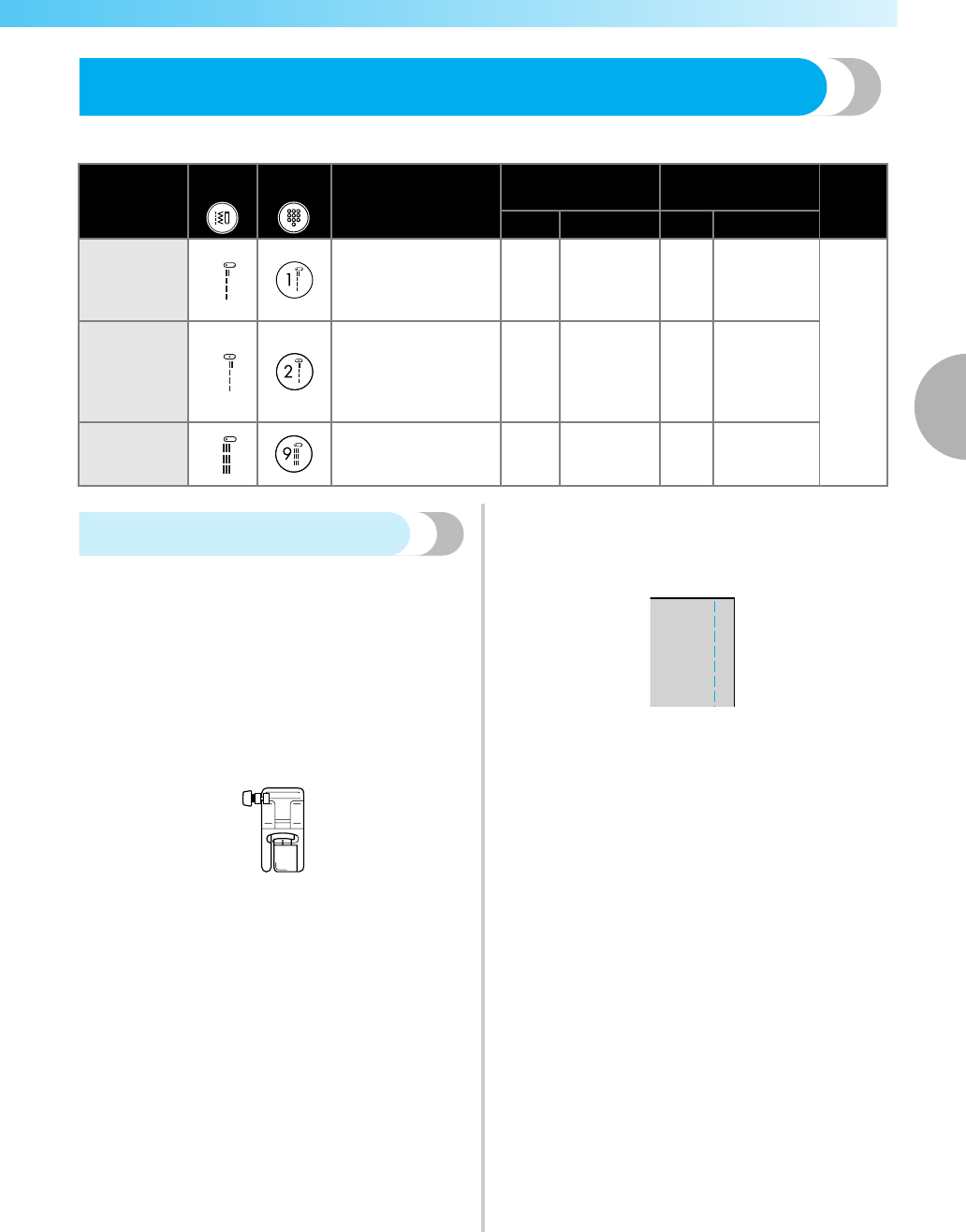
Basic Stitching 75
— — — — — — — — — — — — — — — — — — — — — — — — — — — — — — — — — — — — — — — — — — — — — — — — — — — —
3
Basic Stitching
Straight stitches are used for sewing plain seams. Three stitches are available for basic stitching.
Basic stitching
a
Baste or pin together the fabric pieces.
b
Turn on the sewing machine.
c
Select a stitch.
• For details, refer to “Selecting stitching” (page
67).
d
Attach zigzag foot “J”.
• For details, refer to “Replacing the presser
foot” (page 41).
e
Lower the needle into the fabric at the
beginning of the stitching.
f
Start sewing.
• For details, refer to “Starting to sew” (page
52).
• For details on sewing reverse/reinforcement
stitches, refer to “Securing the stitching”
(page 54).
g
When sewing is finished, cut the thread.
• For details, refer to “Cutting the thread” (page
56).
Stitch Name
Pattern
Numeric
Key
Application
Stitch Width
[mm (inch)]
Stitch Length
[mm (inch)]
Presser
Foot
Auto Manual Auto Manual
Straight stitch
(left needle
position)
01
Basic stitching and
sewing gathers or
pintucks (left baseline/
reverse stitching)
0.0
(0)
0.0–7.0
(0–1/4)
2.5
(3/32)
0.2-5.0
(1/64–3/16)
J
Straight stitch
(center
needle
position)
02
Basic stitching and
sewing gathers or
pintucks (center
baseline/reverse
stitching)
3.5
(1/8)
0.0–7.0
(0–1/4)
2.5
(3/32)
0.2-5.0
(1/64–3/16)
Triple stretch
stitch
03
Reinforcing seams
and sewing stretch
fabrics
0.0
(0)
0.0–7.0
(0–1/4)
2.5
(3/32)
1.5–4.0
(1/16–3/16)
J


















